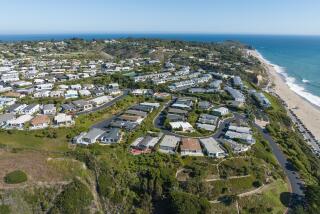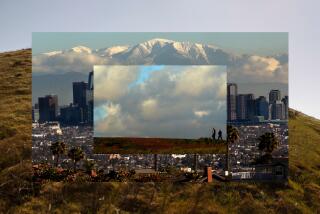Malibu Docents Can Tell You All You Ever Want to Know
Sandra McRea, a fifth-grade teacher from Northridge, was hiking in Malibu Creek State Park recently when a red-shouldered hawk streaked across the blue sky. She recognized it immediately.
“That’s our ‘guard’ hawk,” she said, watching the bird until it disappeared into a large, gnarled oak. “He has three different perches and checks things out from those.”
A little farther down the trail, where falling sycamore leaves refuted the notion of an autumnless Los Angeles, Malibu Creek flowed surprisingly swift and deep. McRea stopped, struck by an obscure fact: “There are no acorns this year,” she said, “and last year we had so many.”
There is a good reason why McRea is on seemingly familiar terms with every bird, tree and 18-inch bullfrog in the 7,000-acre park: She is a docent, and Malibu docents can tell you everything you always wanted to know--and more.
Unpaid volunteers, they are required to be experts on all things relating to the park, from species of plants to the dining habits of the ancient Chumash Indians.
At Malibu, docents run the Visitor Center and take groups or individuals on interpretive nature hikes.
Like the spotted owl, however, there are just not enough of them. Of the 60 members of Malibu Creek Docents, only about 25 are active.
“There’s an ongoing docent shortage,” said McRea, who assists in recruiting and training docents.
And just what does it take to be a decent docent?
A love of the outdoors and at least 12 to 15 hours a month of your time.
A Ph.D. in botany is not a requirement, although to become a docent, one must spend $20 for a series of four lectures and slide shows on the park’s history, geology, flora, wildlife and Chumash lore. Docents must learn and retain a lot of information--McRea has filled a thick, loose-leaf notebook.
“Last week we had an archeologist who specializes in the Chumash,” McRea said.
“He brought up the fact that this particular area was never a Spanish land grant or a farm. It’s never been good for grazing. So it’s always been public land. The only people who ever lived here were the Indians. They had a village where the lower parking lot is now.”
McRea, who teaches at O’Melveny Elementary School, is typical of most docents. Environmentally aware, she attended the “Spirit of the Earth” conference earlier this year in Seattle.
An intrepid hiker who paints and photographs nature scenes, she often arrives at the park at 6 a.m. to hike before doing her docent chores until 4 p.m. at the Visitor Center.
“Being a docent gives you a great excuse to be out here,” she said.
The Visitor Center, a few hundred yards west of the parking lot, is the docents’ pet project. Until a few years ago, it was just a dilapidated old hunting lodge.
State rangers and docents fixed it up, doing most of the work themselves. The main room is a small museum, complete with Chumash artifacts, a stuffed coyote and handmade nature displays. There is also a children’s room.
More to Read
Sign up for The Wild
We’ll help you find the best places to hike, bike and run, as well as the perfect silent spots for meditation and yoga.
You may occasionally receive promotional content from the Los Angeles Times.






